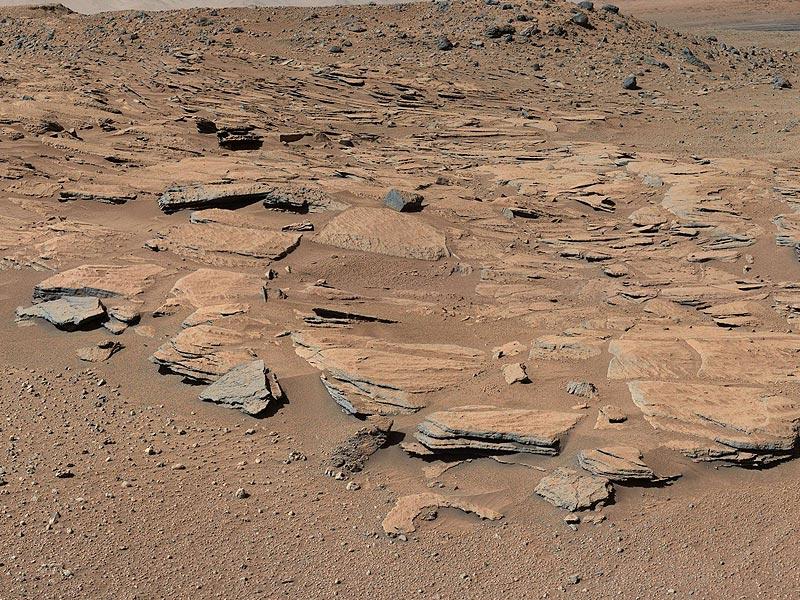Curiosity discovers huge lake bed on Mars
NASA's Mars rover Curiosity has discovered evidence of the existence of a huge lake - once brimming with water and may be life - in the Gale Crater at Mount Sharp.

NASA's Mars rover Curiosity has discovered evidence of the existence of a huge lake - once brimming with water and may be life - in the Gale Crater at Mount Sharp.
The discovery, led by a team that has Indian-American Ashwin Vasavada as deputy project scientist, suggests that ancient Mars maintained a climate that could have produced long-lasting lakes at many locations on the planet.
The observations indicate that Mars' Mount Sharp was built by sediments deposited in a large lake bed over tens of millions of years.
'If our hypothesis for Mount Sharp holds up, it challenges the notion that warm and wet conditions were transient, local or only underground on Mars,' said Ashwin Vasavada, Curiosity's deputy project scientist at NASA's Jet Propulsion Laboratory in the US.
'A more radical explanation is that Mars' ancient, thicker atmosphere raised temperatures above freezing globally, but so far we do not know how the atmosphere did that,' he added.
Why this layered mountain sits in a crater has been a challenging question for researchers.


Mount Sharp stands about five km tall, its lower flanks exposing hundreds of rock layers.
The rock layers - alternating between lake, river and wind deposits - bear witness to the repeated filling and evaporation of a Martian lake much larger and longer-lasting than any previously examined close-up.
'We are making headway in solving the mystery of Mount Sharp. Where there is now a mountain, there may have once been a series of lakes,' said Curiosity project scientist John Grotzinger of the California Institute of Technology.
Curiosity currently is investigating the lowest sedimentary layers of Mount Sharp, a section of rock 500-feet high dubbed the Murray formation.
Rivers carried sand and silt to the lake, depositing the sediments at the mouth of the river to form deltas similar to those found at river mouths on Earth. This cycle occurred over and over again.
Catch all the Latest Tech News, Mobile News, Laptop News, Gaming news, Wearables News , How To News, also keep up with us on Whatsapp channel,Twitter, Facebook, Google News, and Instagram. For our latest videos, subscribe to our YouTube channel.

























